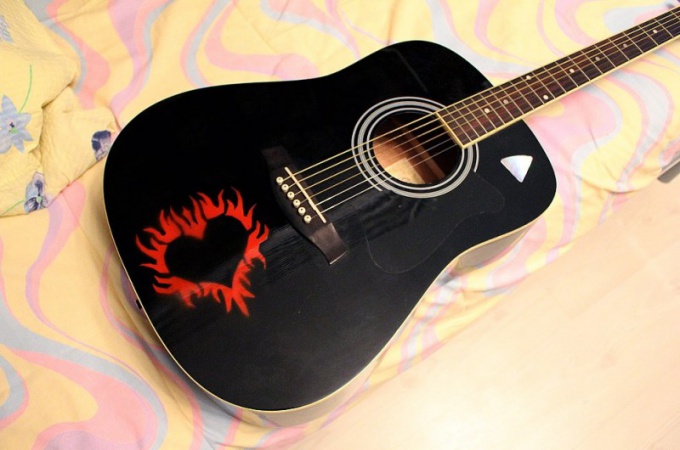You will need
- guitar;
- - sandpaper;
- - selflube;
- grinding machine;
- - wood putty;
- - primer on wood;
- - velour roller;
- - nitro or acrylic paint;
- - nitrocellulose lacquer.
Instruction
1
First completely disassemble the guitar, remove all the accessories and neatly put away, nothing to lose. Then hold the deck on the floor and remove the old paint. To do this, use the sandpaper, orbital or any other grinding machine.
2
To facilitate treat the surface with a special compound that removes paint, or acetone. Note that the surface must still be sanded.
3
If the guitar has chips, dings and dents, be sure to fill their pre-progruntovav surface. As a primer, use adhesion primer for wood works. Apply it a little velour roller or brush (brushes can leave streaks).
4
After drying of the soil, take the putty and start plugging all defects. You can use alkyd or automotive putty, as long as it formed a smooth surface.
5
Sand the guitar so that it shone like a mirror. Again programsuite surface and finally lightly coat the hand slipway (220-400 grain). Wipe deck with a damp cloth and dry. Now you can start painting the guitar.
6
Pick up the paint depending on the selected picture, it is better to buy imported good nitro aerosol or acrylic paint.
7
Before painting screw the deck to a stick at the site of attachment of the neck (through bolt holes) to be able to keep her in limbo. The pad neck seal with masking tape.
8
Apply a layer of paint using stencils, or creating a pattern on the guitar manually. Wait until the paint dries.
9
Cover guitar lacquer in several layers, each time waiting for drying of the previous layer. Each layer grind fine sandpaper or slippable. You can use paint from a container or nitrocellulose lacquer, but it is better to choose a varnish for use outdoors, it has the marking "NC 1xx".
